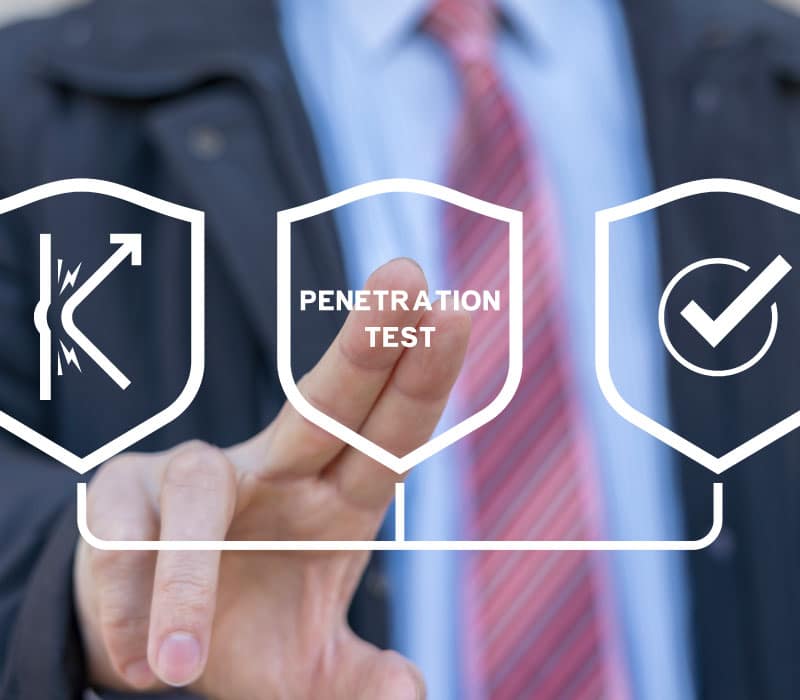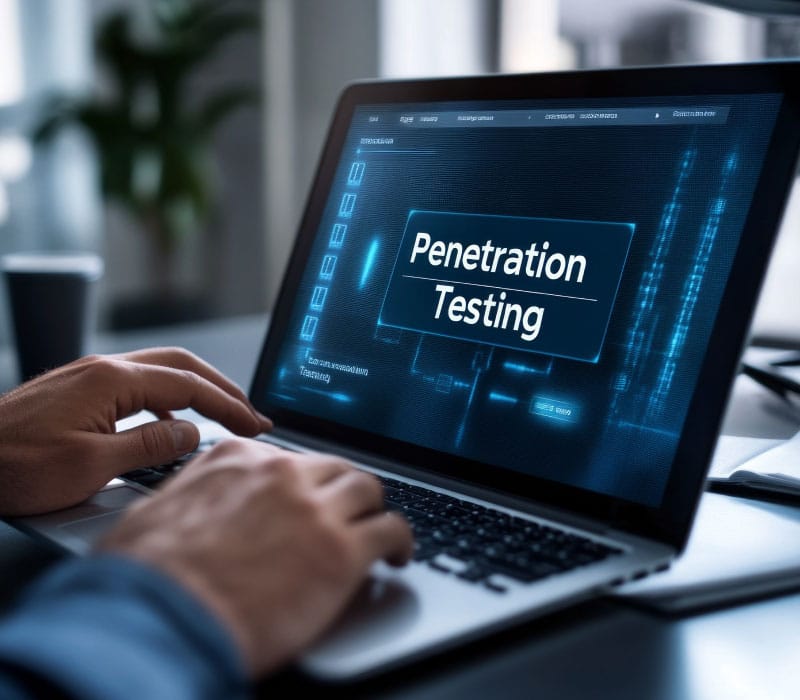Secure. Vigilant. Resilient.
Penetration Testing for Compliance & Risk Reduction: Uncover vulnerabilities before attackers do.
Penetration tests are necessary for companies to comply with various industry frameworks including Safeguards, PCI, SOC and others because they help identify vulnerabilities and weaknesses in the company’s cybersecurity infrastructure. Most frameworks require companies to implement robust security measures to protect consumer data. Regular penetration testing simulates real-world cyber-attacks to uncover potential security flaws, enabling companies to address issues proactively before they can be exploited by malicious actors.
By conducting penetration tests, companies can identify security gaps in systems, networks, and applications that may put sensitive data at risk.
Are all penetration tests the same?
The primary difference between an internal and an external penetration test lies in the perspective from which the test is conducted and the scope of the security assessment.
- External Penetration Test:
Simulates an attack from outside the organization, mimicking the perspective of an external hacker or cybercriminal who is attempting to breach the network from the internet or external systems. - Internal Penetration Test:
Simulates an attack from within the organization’s network, which could be carried out by an insider (such as an employee, contractor, or someone with access to the internal network).

“I have been very pleased with my experience with Applied Innovation. The professionalism is remarkable, and the quality of services was outstanding. The services I requested were performed exactly as described and within the time frame promised. They worked extremely well with my IT vendor, and thanks to Applied Innovation, I am 100% confident in the strength and security of my network. We house thousands and thousands of lines of customer data, and our network security is of the upmost importance. If you are like me and need to ensure your network is one of the things you do not have to worry about, trust Applied Innovation with your needs.”
”Absolutely thrilled with the service provided by Applied Innovation! Their team conducted a thorough and professional penetration test, identifying internal and external vulnerabilities I hadn’t even considered. The report was clear, actionable, and delivered on time. The attention to detail and expertise they brought to the table was impressive. I feel much more confident in our network’s security after working with them. Highly recommend their services to anyone looking for top-tier cybersecurity!”

How long do I have to mitigate risks?
The timeline for mitigating issues found during a penetration test should follow the industry’s best practices. Companies are required to take reasonable and prompt action to address vulnerabilities identified in a penetration test or risk assessment.
Key Factors Affecting the Timeline for Mitigation:
Severity of the Issues:
Best Practice:
A good practice is to address high-risk vulnerabilities within 30 days of identifying them, and to develop a remediation plan for lower-risk vulnerabilities with realistic timelines based on their potential impact. Some security frameworks (e.g., NIST or CIS) may have more detailed recommendations about remediation deadlines, and adopting such frameworks can help ensure that remediation efforts are aligned with industry’s best practices.
What is the difference between a penetration test and vulnerability scan?
Penetration tests and vulnerability scans are both important tools used in cybersecurity to assess the security of systems, but they have key differences in their purpose, approach, and outcomes. Here’s a breakdown of the two:
The result of a penetration test is a detailed report that includes:
The result of a vulnerability scan is a report that includes:
It is not typically considered best practice to have your current network and hardware management company conduct your penetration testing, and here’s why:
- Potential Conflict of Interest:
- Objectivity: Your network and hardware management company are already responsible for maintaining your systems and infrastructure. If they also conduct the penetration test, there could be a conflict of interest. They may be less likely to identify or report vulnerabilities that stem from their own configurations or practices, potentially leading to a lack of objectivity in the test results.
- Unbiased Assessment: An external, independent third-party penetration testing provider is more likely to provide a neutral, unbiased assessment of your security posture. This ensures that vulnerabilities are identified and reported without any concern about the provider’s ongoing relationship with the company.


- Independence and Credibility:
- Third-Party Validation: Engaging an independent, specialized penetration testing company provides external validation of your security program. This can enhance the credibility of your security posture and assure customers, regulators, and partners that you are taking necessary precautions to safeguard sensitive data.
- Third-Party Reports: Having a separate company conduct the penetration test ensures that the findings and recommendations come from an independent source, which may carry more weight during internal reviews, compliance assessments, or regulatory audits.
- Broader Perspective:
- Fresh Viewpoint: External penetration testers bring a fresh perspective to your security posture. They may identify risks or attack vectors that your internal team, familiar with your infrastructure, might overlook. The external team is also more likely to be up to date on the latest attack techniques and vulnerabilities, making their findings more comprehensive.

Applied Innovation Cyber Services
Snapshot-in-time Assessments:
Network penetration testing – internal or external
A simulation of a real-world attack to provide a snapshot-in-time assesment of vulnerabilities and threats to your network infrastructure.
Web application penetration testing services
Utilizing the (OSSTMM) Open Source Security Testing Methodology and the (PTES) Penetration Testing Execution Standards Applied Innovation’s Web application testing leverages the (OWASP) Open Web Application Security Project framework for assessing the security of web-based applications.
Vulnerability assessments
A systematic review of an organization’s security weaknesses to identify, classify, and prioritize vulnerabilities within their network infrastructure. A vulnerability assessment can be conducted monthly, quarterly or annually.












